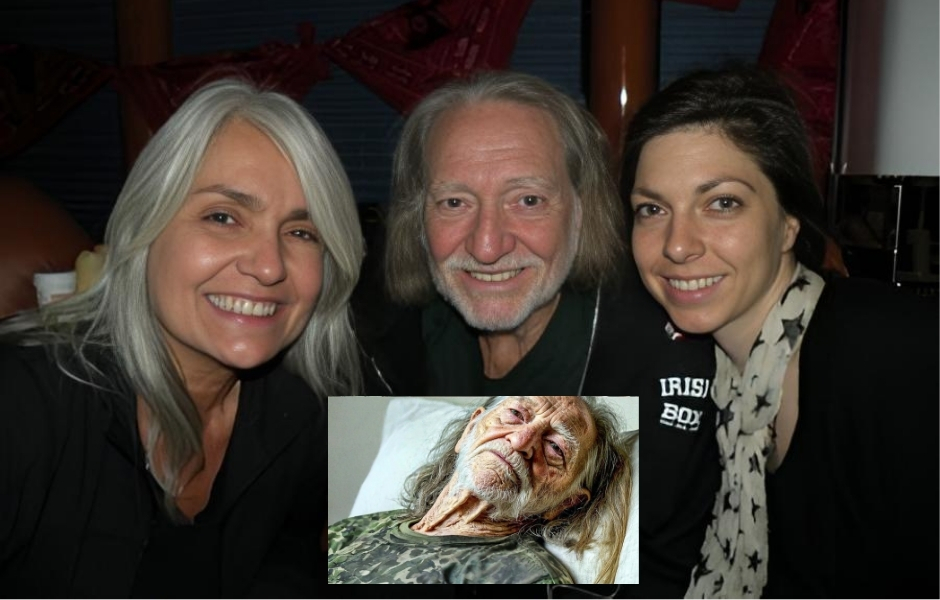
A Timeless Tear: Unpacking the Enduring Appeal of Willie Nelson’s “Blue Eyes Crying In The Rain”
For those of us who’ve been around the musical block a time or two, there are certain songs that aren’t just tracks on an album; they’re markers of an era, echoes of shared experiences, and testament to the enduring power of a beautifully crafted melody wedded to heartfelt lyrics. And when we talk about such cornerstones of American music, particularly in the realm of country, the name Willie Nelson inevitably rises to the forefront. More than just a singer, Willie is a national treasure, a living legend whose voice carries the weight of decades of storytelling, wisdom, and that quintessential blend of world-weary charm and profound insight. Today, we’re not just discussing a song; we’re revisiting a moment, a feeling, and a performance that truly solidified his place in the pantheon of greats: his iconic rendition of “Blue Eyes Crying In The Rain.”
Now, for the uninitiated, or perhaps those who’ve only stumbled upon it casually, it might seem like a simple country ballad. But to truly appreciate its magic, one must consider its genesis and the journey it took to reach Willie’s unmistakable delivery. The song itself was penned by Fred Rose way back in 1945, and it had been recorded by a few artists before Willie ever laid his hands on it. Yet, it remained largely unheralded, a hidden gem waiting for the right voice to unlock its full potential. Enter Willie Nelson, a man who, by the mid-1970s, was already a respected songwriter but was on the cusp of truly breaking through as a singular performing artist.
What Willie brought to “Blue Eyes Crying In The Rain” was not just a vocal performance; it was an interpretation, a masterclass in subtlety and profound emotional connection. He didn’t overpower the lyrics with vocal acrobatics or flashy instrumentation. Instead, he stripped it down, allowing the inherent melancholy and universal theme of lost love to shine through with a quiet dignity. The guitar work is sparse yet evocative, a gentle counterpoint to his slightly weathered, instantly recognizable voice. This was a man who understood the nuances of sorrow and longing, not as a theatrical display, but as a genuine human experience.
Consider the landscape of popular music in 1975, the year “Blue Eyes” became a massive hit. The airwaves were dominated by a myriad of sounds, from disco to rock. Yet, this unassuming, traditional country ballad managed to cut through the noise, resonating deeply with audiences across genres. Why? Because its appeal transcends fleeting trends. It speaks to the human heart in a language that is both simple and profound. The imagery of “blue eyes crying in the rain” is instantly vivid, painting a picture of regret, farewell, and the lingering ache of a connection that has, for whatever reason, slipped away. It’s a feeling many of us, regardless of our walk of life, have encountered.
This song wasn’t just a commercial success; it was a critical triumph. It garnered Willie Nelson his first Grammy Award and cemented his status as a mainstream star, proving that authenticity and genuine emotion could find a vast audience. It was a pivotal moment in the “outlaw country” movement, showcasing how traditional country values could be revitalized and reimagined for a new generation without sacrificing their inherent soul. Willie, with his band of seasoned musicians, brought a raw, unvarnished quality to the music that felt refreshingly honest.
So, the next time you hear those opening notes, take a moment. Don’t just listen; truly feel the enduring power of Willie Nelson’s rendition of “Blue Eyes Crying In The Rain.” It’s a testament to the fact that some songs, like some experiences, are meant to be cherished, to evoke a sense of quiet reflection, and to remind us of the beautiful, sometimes bittersweet, tapestry of human connection. It’s a song that proves that genuine artistry, delivered with an open heart, will always find its way into ours.
